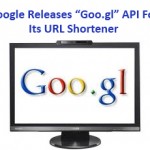 New York — Google has just announced that the new Google Adwords URLs are going to look different in the future. The domain component of your display URL for all ads appearing on Google’s search engine results pages will automatically begin appearing in lowercase letters within the next week when your ad is served (e.g., Subdomain.Example.com/Subdirectory will now appear as subdomain.example.com/Subdirectory), Google announced yesterday.
New York — Google has just announced that the new Google Adwords URLs are going to look different in the future. The domain component of your display URL for all ads appearing on Google’s search engine results pages will automatically begin appearing in lowercase letters within the next week when your ad is served (e.g., Subdomain.Example.com/Subdirectory will now appear as subdomain.example.com/Subdirectory), Google announced yesterday.
According to Lisa Shieh of Google AdWords, every month the company attempts to experiment with different modifications in page search results. This includes testing colors, spacing, layouts and fonts, together with different variables.
“Recently, we discovered that by standardizing the look of the URLs on the page, we were able to improve the metrics for many of our user, including ad clickthrough rates,” Shieh added.
“As you have probably guessed by now, we believe that regular website testing is the best way to ensure an optimal user experience, and we encourage you to test variations of your own website,” she says.
Furthermore, the good news is that advertisers need not worry about editing their own ads. All the uppercase letters that are displayed in URL domains will automatically be changed by the Google AdWords program into lowercase as soon as the changes are implemented.
Shieh continued that this obviously includes click through rates on ads. She also added that Google is constantly recommending for people to test campaigns in order to obtain the best possible results. More specifically, Google suggests using its own Website Optimizer tool for such testing.
Google has unleashed the updated AdWords interface to allow marketers to use a single negative keyword list across multiple campaigns to your account’s Control Panel and Library.
“Negative keywords like [free or trial] do not require granular management on the campaign level, and we have heard from many of you that you would like a more scalable way to manage these broadly-applicable sets of terms,” wrote Googler Dan Friedman on the Inside AdWords blog.
Once the list is set up, it can be coupled with new and existing campaigns. Marketers can also add new keywords, and the new words will propagate out to all of the campaigns with which the list is associated. The tool allows marketers to create multiple negative keywords lists, as well.
“For instance, say you have a set of negative keywords you always add to any campaign running on the Search Network,” explains Friedman.

You can now more easily manage a group of negative keywords and associate the list with multiple search campaigns. “Previously, you would need to copy that set to every new search campaign you created in your account. Now, with shared lists, you can simply create a single negative keyword list and associate it with each search campaign. If there is a new negative keyword you would like to add to all of those campaigns, just add it to your list and it will automatically update across each campaign. Similarly, if you create a new campaign, you can add your negative keyword list to exclude all of the necessary terms with just a few clicks,” says Friedman.


